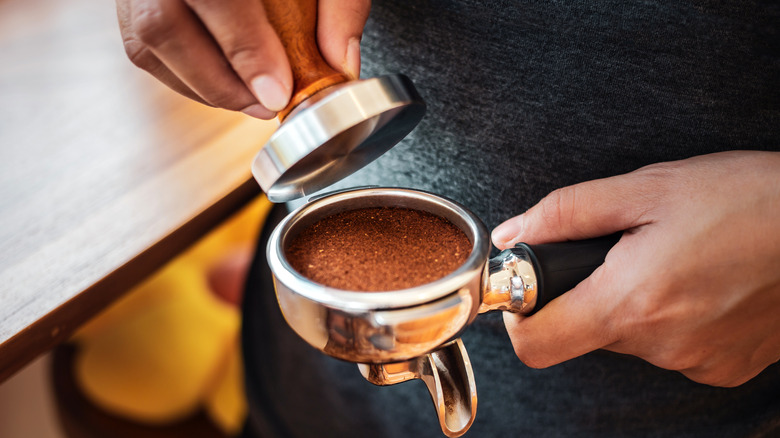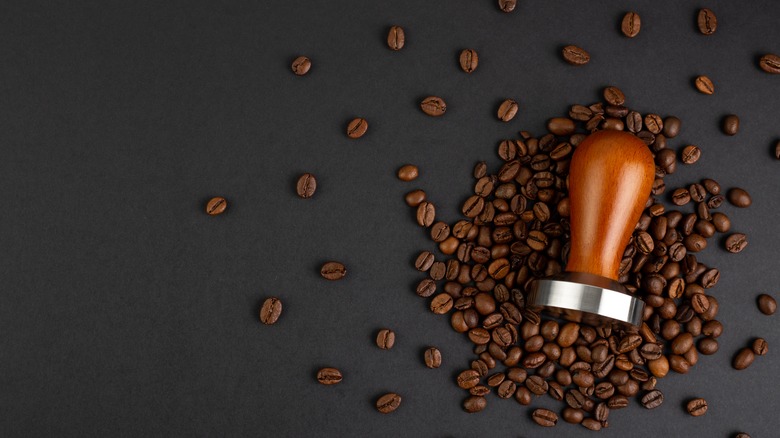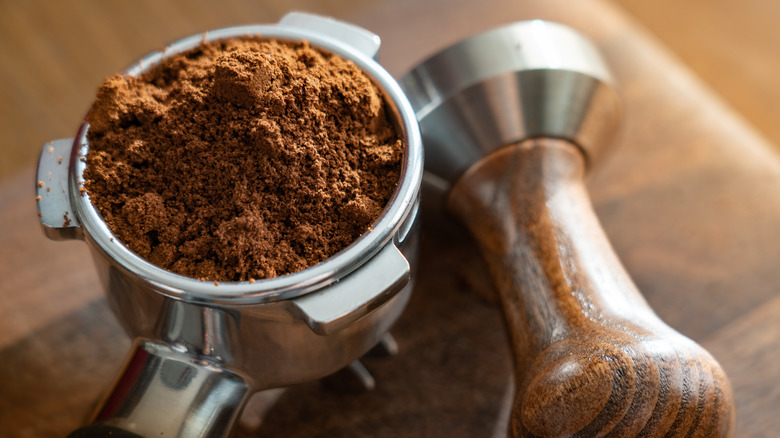Are Flat Or Convex Espresso Tampers Better For The Perfect Shot?
Whether it conjures an image of a sun-drenched Italian coastline or a cortisol-drenched commute through rush hour, espresso plays a substantial role in many of our lives. Baristas, both professional and amateur, understand the importance of craft and some of them search endlessly for the perfect shot of espresso.
Making espresso isn't easy (especially if you're trying to make it at home). There's the temperature and pressure of the water, the way you grind your beans, and where you source your coffee from. However, there's one step in the process that continues to be a focal point for hot debate between coffee craftsmen: tamping. Tamping is the process of compressing the espresso grinds together in the portafilter before attaching it to your espresso machine.
Tampers are the tools used to do that and they come in many shapes and sizes, though they all have a handle and a base. The two most popular styles are flat tampers and convex tampers. Flat tampers have a flat base, while convex tampers have a slightly curved base. Flat tampers are better for beginners because it's easier to compact the grinds evenly, though the choice between flat and convex tampers ultimately comes down to a matter of preference.
Different tampers, different results
The goal of tamping is to produce an evenly compacted puck of espresso grinds in the portafilter. If the grinds are too loose, you end up with something gross and watered down. If the grinds are too compact, the end result may be too strong and bitter — and that's not all.
The level of compactness needs to be relatively even across the entire puck. If the left side is looser than the right side, the water will follow the path of least resistance and only flow through the left side. That's not good because all of the grinds on the right side are unable to contribute if water isn't hitting them. This undesirable process is called channeling,which makes yet another watered down shot of espresso.
Flat tampers are very good at making sure the puck is even across the portafilter because the base is flat. You do need to make sure the grounds are spread out though, something usually done with your finger which may be unsanitary. Convex tampers are slightly curved at the base, resulting in a puck whose edges are somewhat raised. It's a little bit harder to master getting the puck evenly compact with a convex tamper but it's great at reducing channeling if you can get it right.
Which tamper is better?
The debate over which of these tampers is better rages on with no end in sight. Every barista will have their preference and there are good reasons to choose either of them. That said, they both have their strengths and weaknesses.
As previously mentioned, flat tampers are really good at producing an evenly compact puck. However, what they aren't so good at is addressing the edge of the puck. If the tamper isn't shaped perfectly for the portafilter, the sides of the puck won't get compacted right, resulting in side channeling where the water just runs down the edges completely missing the grinds. The reason convex tampers are shaped the way they are is to address the problem of side channeling. By making the edges slightly higher than the center, the water is less likely to side channel. However, because of its shape, it's really easy for inexperienced baristas to compact the grinds unevenly.
It largely comes down to a matter of preference and experience. If you're accustomed to convex tampers, there's no real reason for you to switch to flat tampers or vice versa. If you're just starting out and need to know which one to buy, flat tampers don't have as steep of a learning curve as convex tampers. It's worth trying both styles to see which one you prefer.


